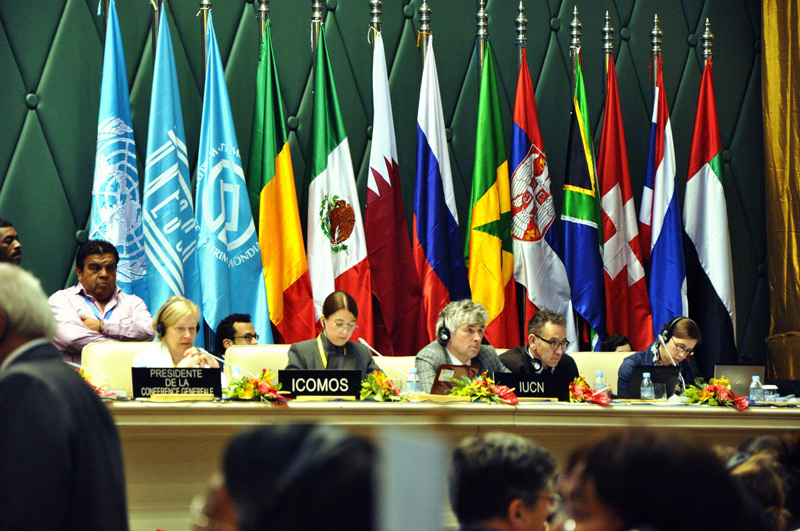IUCN urges excellence for World Heritage
Doha, Qatar, 15 June 2014 (IUCN) – World Heritage faces growing threats from illegal wildlife trade and development pressures, requiring the highest standards in conservation action at the global level, according to IUCN (International Union for Conservation of Nature), the Convention’s advisory body on nature.

Photo: IUCN – Yichuan Shi
At the 38th annual World Heritage Committee meeting, which opens today in Doha, Qatar, IUCN recommends four new sites for inscription on the World Heritage List, including Botswana’s iconic wetland the Okavango Delta, India’s Great Himalayan National Park Conservation Area, Philippines’ Mount Hamiguitan Range Wildlife Sanctuary and Denmark’s Stevns Klint.
“Once again we have some exceptional places waiting to be inscribed on the most prestigious list that celebrates our common natural heritage,” says Julia Marton-Lefèvre, IUCN Director General. “However, declaring a site World Heritage is not an end in itself. World Heritage status should guarantee excellence in protection and the highest level of commitment to conservation – collectively at the international, national and community levels.”
In order to trigger international action to increase protection of the sites that need it most, IUCN recommends Tanzania’s Selous Game Reserve, Thailand’s Dong Phayayen-Khao Yai Forest Complex and Kenya’s Lake Turkana National Parks to be inscribed on the List of World Heritage in Danger.
Illegal wildlife trade is a serious threat to the biodiversity of the Tanzanian and Thai sites, while a major dam development project is putting Lake Turkana’s integrity at risk. This is the fourth consecutive year that IUCN is recommending danger-listing for this site due to the ongoing construction.
“Illegal wildlife trade and unsustainable development within our planet’s most precious places are international issues that must mobilize international action,” says Tim Badman, Director of IUCN’s World Heritage Programme. “If we cannot stop serious threats from spreading in World Heritage sites, what does this say about prospects for other key natural areas, which have much less visibility?”
This year IUCN also recommends the extensions of three existing sites: the South China Karst, the transboundary Bialowieza Forest located in Poland and Belarus, and the Wadden Sea – a World Heritage site shared by Denmark, Germany and the Netherlands. Expanding these sites will encourage stronger cross-border cooperation in their protection and conservation.
To ensure that World Heritage status continues to provide protection to World Heritage sites and serves as a flagship for best practice in global conservation, IUCN has developed the first global assessment of natural World Heritage – the IUCN World Heritage Outlook. The platform, which will be launched in Doha, highlights well-managed World Heritage sites and draws attention to the need for action in sites under threat.
For more information or to set up interviews, please contact:
Ewa Magiera, IUCN Media Relations, m +41 76 505 33 78, ewa.magiera@iucn.org
In Doha: Célia Zwahlen, IUCN World Heritage Programme Communications, celia.zwahlen@iucn.org



